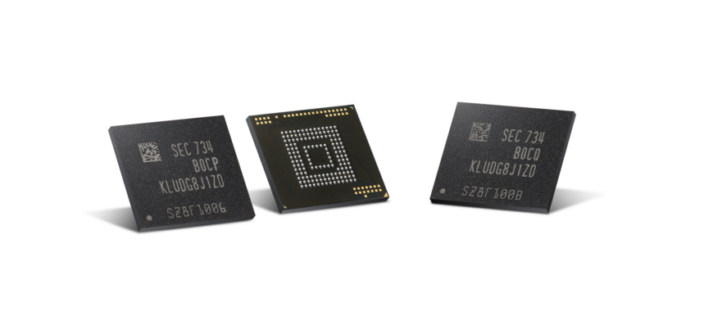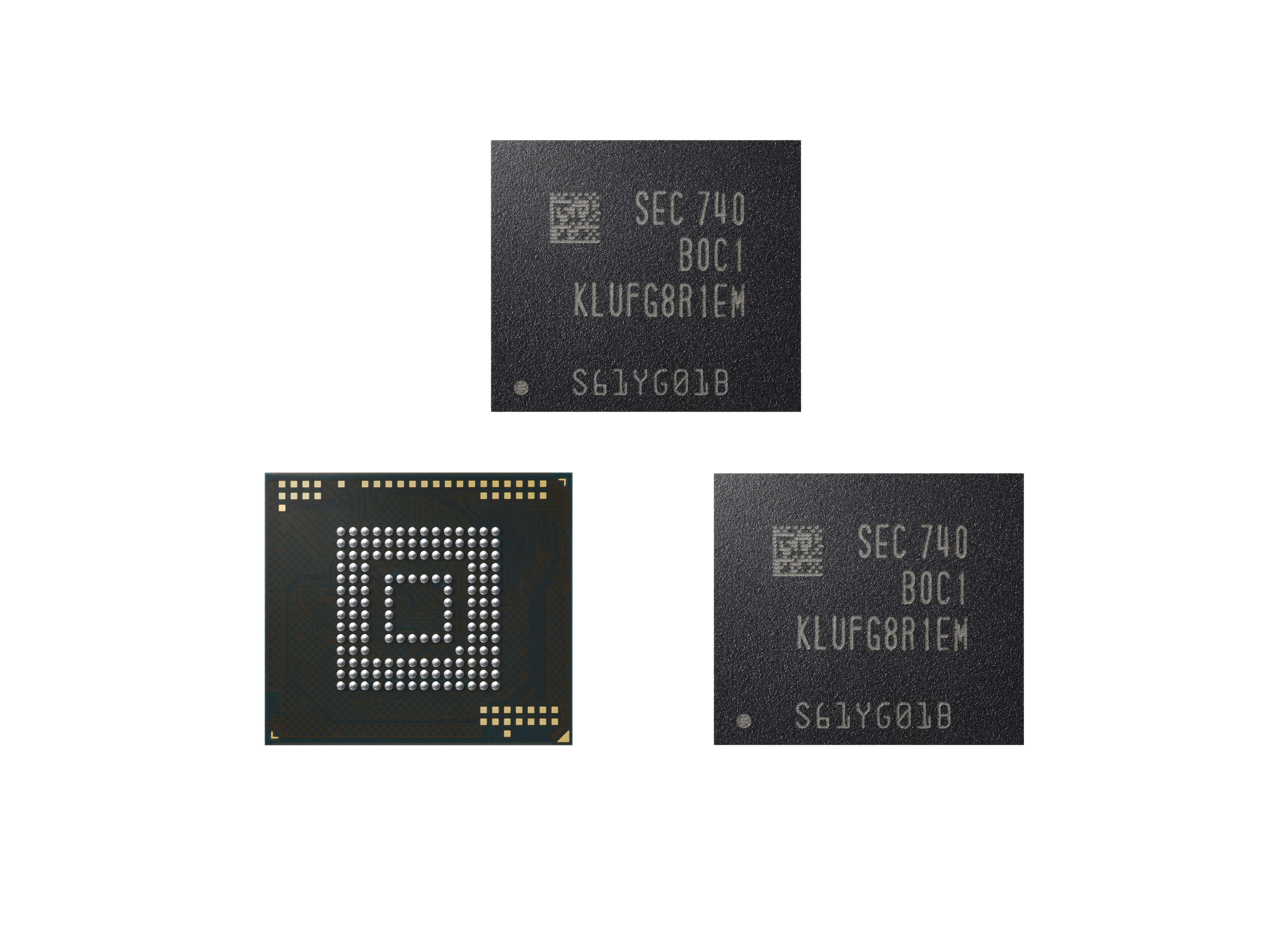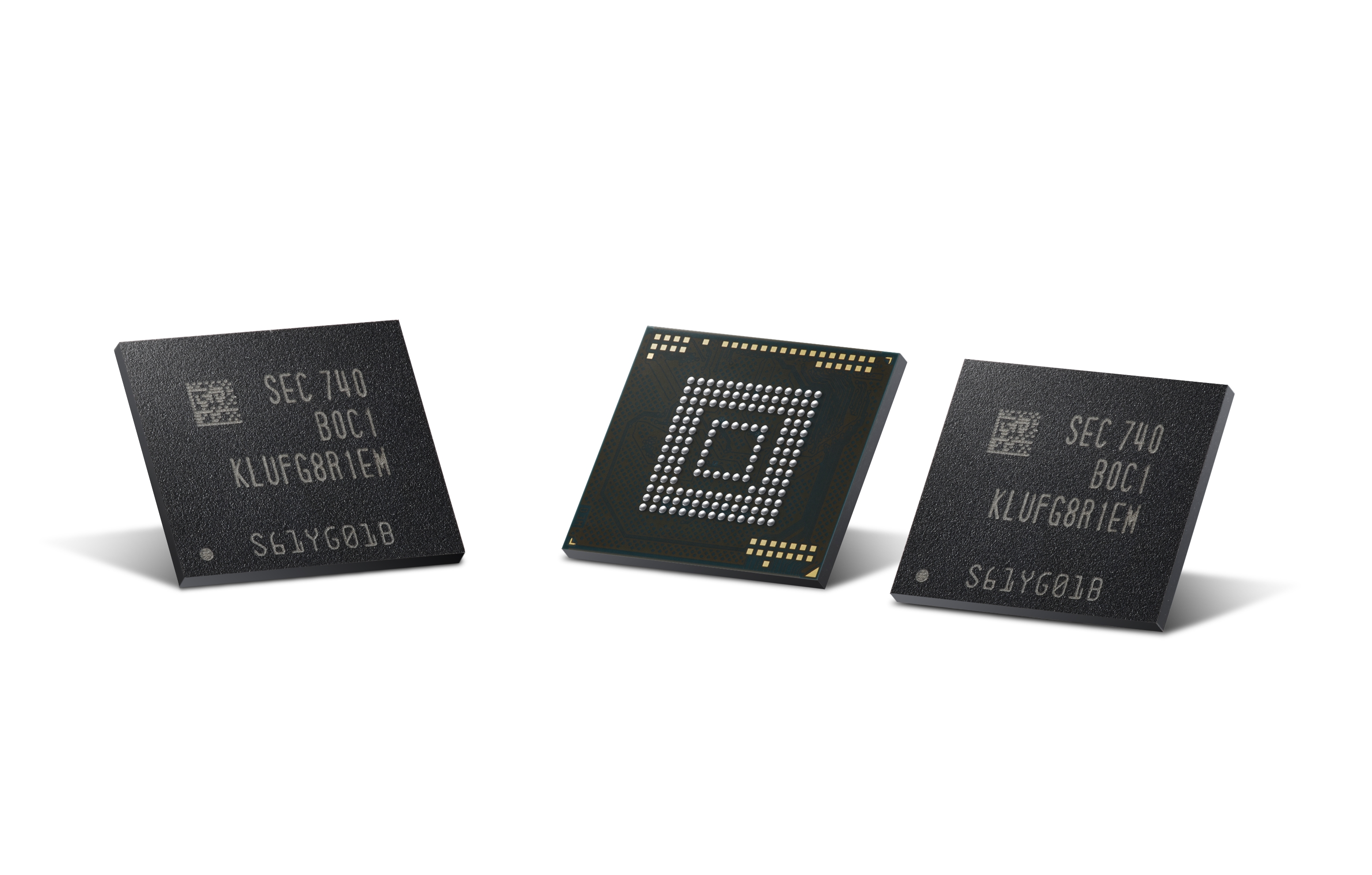Samsung Starts Producing First 512-Gigabyte Universal Flash Storage for Next-Generation Mobile Devices
Korea on December 5, 2017
Setting a new threshold for mobile storage to handle ever-increasing amounts of multimedia content
Samsung Electronics, the world leader in advanced memory technology, today announced that it has begun mass production of the industry’s first 512-gigabyte (GB) embedded Universal Flash Storage (eUFS) solution for use in next-generation mobile devices. Utilizing Samsung’s latest 64-layer 512-gigabit (Gb) V-NAND chips, the new 512GB eUFS package provides unparalleled storage capacity and outstanding performance for upcoming flagship smartphones and tablets.
“The new Samsung 512GB eUFS provides the best embedded storage solution for next-generation premium smartphones by overcoming potential limitations in system performance that can occur with the use of micro SD cards, said Jaesoo Han, executive vice president of Memory Sales & Marketing at Samsung Electronics. “By assuring an early, stable supply of this advanced embedded storage, Samsung is taking a big step forward in contributing to timely launches of next-generation mobile devices by mobile manufacturers around the world.”
Consisting of eight 64-layer 512Gb V-NAND chips and a controller chip, all stacked together, Samsung’s new 512GB UFS doubles the density of Samsung’s previous 48-layer V-NAND-based 256GB eUFS, in the same amount of space as the 256GB package. The eUFS’ increased storage capacity will provide a much more extensive mobile experience. For example, the new high-capacity eUFS enables a flagship smartphone to store approximately 130 4K Ultra HD (3840×2160) video clips of a 10-minute duration*, which is about a tenfold increase over a 64GB eUFS which allows storing only about 13 of the same-sized video clips.

To maximize the performance and energy efficiency of the new 512GB eUFS, Samsung has introduced a new set of proprietary technologies. The 64-layer 512Gb V-NAND’s advanced circuit design and new power management technology in the 512GB eUFS’ controller minimize the inevitable increase in energy consumed, which is particularly noteworthy since the new 512GB eUFS solution contains twice the number of cells compared to a 256GB eUFS. In addition, the 512GB eUFS’ controller chip speeds up the mapping process for converting logical block addresses to those of physical blocks.
The Samsung 512GB eUFS also features strong read and write performance. With its sequential read and writes reaching up to 860 megabytes per second (MB/s) and 255MB/s respectively, the 512GB embedded memory enables transferring a 5GB-equivalent full HD video clip to an SSD in about six seconds, over eight times faster than a typical microSD card.
For random operations, the new eUFS can read 42,000 IOPS and write 40,000 IOPS. Based on the eUFS’ rapid random writes, which are approximately 400 times faster than the100 IOPS speed of a conventional microSD card, mobile users can enjoy seamless multimedia experiences such as high-resolution burst shooting, as well as file searching and video downloading in dual-app viewing mode.
On a related note, Samsung intends to steadily increase an aggressive production volume for its 64-layer 512Gb V-NAND chips, in addition to expanding its 256Gb V-NAND production. This should meet the increase in demand for advanced embedded mobile storage, as well as for premium SSDs and removable memory cards with high density and performance.
* Editor’s note: The calculation reflects internal tests where the averaged actual storage is approximately 93% of the labeled capacity, and where the preloaded mobile OS uses about 13GB of the capacity on a flagship smartphone.




